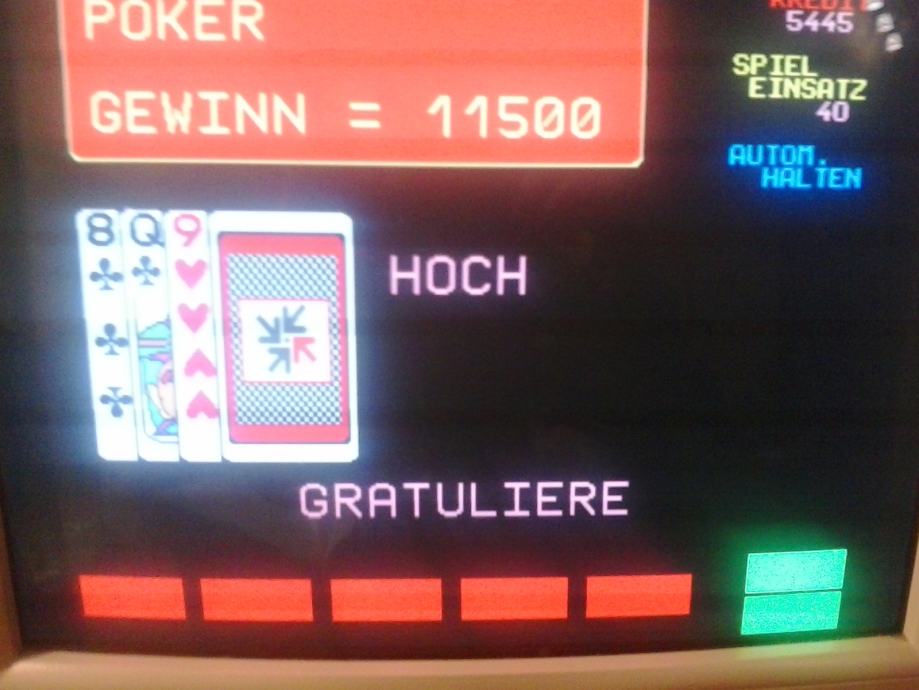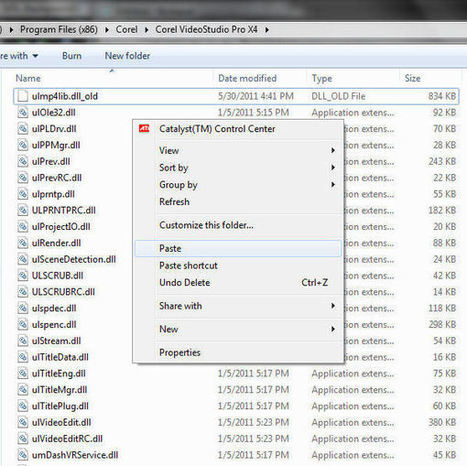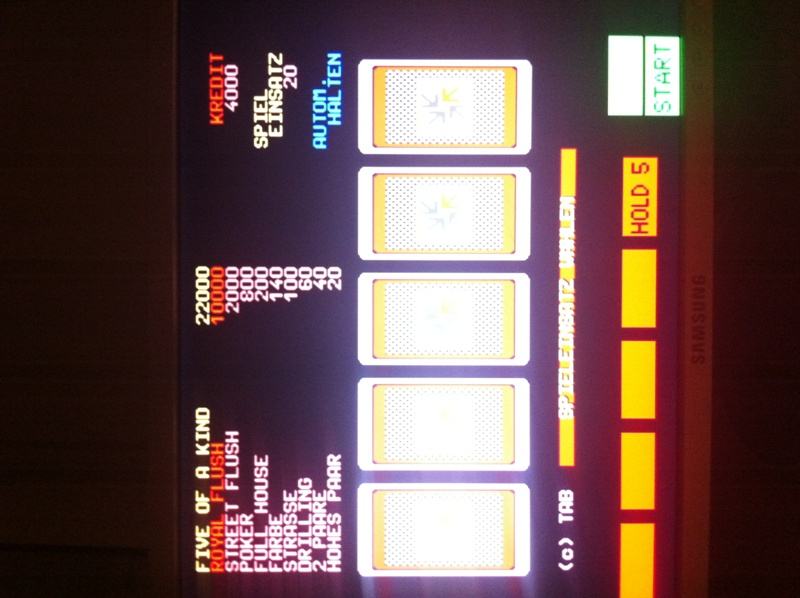If you’re looking for an easy way to enjoy Java content on your Chromebook, you’ve come to the right place. We’re going to walk you through a simple guide on how to install the Oracle version of Java on your Chromebook without installing Crouton or other apps. Considering that the Chrome OS can also work with Linux binary codes, we are going to treat the Chrome OS like a Linux OS and make you able run Java on your machine in no time. Before we begin go ahead and enable Developer Mode on your Chromebook.
A guide that can help you with that can be found How To Run Full Java 8 On Chromebook Step 1 You must open a terminal emulator of Chrome OS or a chrosh so hit the combo Ctrl+Alt+T and type in the word shell, hit Enter, type in again sudo su and hit Enter again. If everything goes well you will be asked to type in a password, which according to the device’s build should be one of the following: chronos, chrome, facepunch or password. Note: You won’t see the actual type in, so make sure you don’t make any typos while trying the passwords. As soon as this is done, you have full access to the Chrome shell. In order to make the file system writable, type in the command: mount -o remount,exec,rw /, hit Enter, type cd /home and hit Enter again. Step 2 Now you can download Oracle’s Java Runtime, deppending on the type of device you own. For the 32 bit hardware on Chrome OS, type in the text: “ wget -O jre.tar.gz”; type Enter.
For the 64 bit hardware on Chrome OS, type in the text: “ wget -O jre.tar.gz“; type Enter. Step 3 Now you have to extract the Archive so type the command tar zxvf jre.tar.gz, followed by Enter, then mv jre1.8. /bin with Enter, next do cd /bin – which will open the executables folder. The next command is the last one and you must change a number in it to make sure it won’t crash. So, type in: ln -s /bin/jre1.8.045/bin/java /bin/java and replace the number 45 here with the version number found on the Java website – for instance, if you find the Java Version 8 Update 49 and not the version number 45, replace it with 49. That’s all folks you can now run Java on Chromebook! Now you can open Java by doing the command java-version – this command will write the version of Java in the OS and you will be able to enjoy this type of content as well.
Disclaimer: Keep in mind that some Chromebooks might not have a compatible built for Java so attempting this could make your system freeze. If you’ll find yourself in this situation, reboot your device and don’t attempt to install Java on your Chromebook anymore. Tell us if you’ve tried to execute other Linux binaries on a Chromebook device and how that worked out for you.
Jolly Card Tab Austria Mame Rom
Jolly Card (Austrian) Group: Jolly Card (Austrian) Manufacturer: TAB Austria: Year: 1985: Size: 99KB: Category. (Multiple Arcade Machine Emulator) Name Size CRC. Wagering requirement texas holdem poker 2 tpb on 40x before you can make a withdrawal and wagering is texas holdem poker 2 tpb with real money first. Game contribution weightings apply to wagering requirements. Maximum bet texas holdem poker 2 tpb while playing with bonus is £5. Minimum deposit of £10 + 2.5% fee (min 50p).
Apple Developer Tools for Java This article provides a broad overview of recommended tools for Java development. It covers integrated development environments (IDEs) from other manufacturers, Apple’s own Xcode IDE, the Jar Bundler application, and methods for obtaining and viewing documentation. JDK Tools in OS X The Java development tools in OS X are similar to the tools you find on other UNIX-based platforms. The command-line tools that Sun provides as part of the JDK for Linux and Solaris are ported for OS X and work just as they do on those platforms. There are only a few significant differences between the standard JDK tools in OS X and those found on other UNIX-based platforms:.
The installed location of the JDK command-line tools is different in OS X. These tools are installed with the rest of JavaVM.framework in /System. The Java tools provided in the default path in /usr/bin/ will execute the version of Java the user has selected as their preferred version for applications in Java Preferences. For more on Java Preferences, see. For more information on overall differences in where Java components are in OS X, see.
tools.jar does not exist. Classes usually located here are instead included in classes.jar. Scripts that rely on the existence of tools.jar need to be rewritten accordingly. Java IDEs Java development on any platform often benefits from the use of an Integrated Development Environment (IDE), which provides a more fluid workflow between writing, compiling, running, debugging, and packaging Java code than a simple text editor and the command line. Different IDEs offer unique features and are often suited for different kinds of Java development. These IDEs are industry leaders and offer substantial support for OS X:.

Eclipse IDE for Java Developers ( ) is a free download. Netbeans IDE ( ) is a free download. Jetbrains IntelliJ IDEA ( ) requires a license for continued use after a trial period. Xcode ( ) is a free download with a free account from the Apple Developer Connection. If you are developing a JNI library or intend to have your application communicate with Cocoa, you should plan to use the Xcode Tools for those portions of your development. For more information on JNI development, see. Xcode Tools Apple provides a full suite of general developer tools with OS X.

This suite of tools, the Xcode Tools, is free but not installed by default. The tools are available for download at the Apple Developer Connection (ADC) Member Site. Igi 1 f11 f12 free download.
If you do not have an ADC membership, you can enroll for various levels of membership, including a free online membership that allows you access to the member site,. Get the Current Tools Apple frequently releases updates to the OS X Developer Tools. Even if you already have the Xcode Tools installed, you should check the Member Site for the most up-to-date version. With the Xcode Tools, you have a full-featured development environment including:. Command-line tools, installed in /Developer/Tools/.
Graphical tools, installed in /Developer/Applications/. Sample code, installed in /Developer/Extras/Java/ Xcode The core component of the OS X development environment is Xcode. Xcode is a complete IDE that allows you to edit, compile, debug, and package Mac apps written in multiple languages.
Even if you do not intend to use it for your primary Java development, it is helpful to become familiar with Xcode. Downloadable and the sample code installed in /Developer/Extras/Java/ are both usually provided as Xcode projects. Additionally, there are some elements of documentation viewing that are available only through Xcode. For more on using Xcode for Java development, see the Xcode Help menu. The Xcode Organizer Xcode helps you manage Java applications with the Organizer.
You can open it by choosing Organizer from the Window menu. Figure 1 shows the Organizer window. Figure 1 The Xcode Organizer The Organizer shows your project exactly as it is laid out in the file system. Spellforce 3 walkthrough. This is in contrast to the main Xcode project windows, which allow you to arrange files arbitrarily without altering their location on disk.
Como Programar Un Control Universal
The Organizer’s direct reflection of the file system better serves Java development and is similar to other Java IDEs. To create a new Java project in Xcode, choose New From Template from the New menu in the bottom-left corner of the Organizer.
Xcode and Ant Xcode uses Apache Ant to compile and run Java applications. You can customize your build settings by modifying the build.xml file that is automatically generated when you create a new Java project. By default, the source and target compiler flags in build.xml are set to 1.3 and 1.2, respectively.
This is to ensure compatibility with as many Java versions as possible. Raise these default values to take advantage of APIs and features, such as assertions and generics, that are available only with later versions of Java. Jar Bundler Jar Bundler is an application that takes Java applications deployed as standalone Jar files and turns them into applications that can be launched just like native Mac apps. Although the Terminal application is a part of every installation of OS X, many OS X users never use it. To prevent your users from having to use Terminal for your Java applications, you should wrap your application as an OS X application bundle (see ). Jar Bundler allows you to do this very easily. It also provides a simple interface for you to set system properties that make your applications perform their best in OS X.
Jar Bundler is available in /Developer/Applications/Utilities/. More information on Jar Bundler is available in Jar Bundler User Guide. Applet Launcher Applet Launcher (in /Developer/Applications/Utilities/) provides a graphical interface to Sun’s Java Plug-in. Applet Launcher loads an applet from an HTML page.
For example, entering the following URL launches the ArcTest applet: file:///Developer/Extras/Java/Applets/ArcTest/example1.html Applet Launcher is useful for testing your applets in OS X. Performance and behavior settings for applets may be adjusted in the Java Preferences application installed in /Applications/Utilities/. Other Tools In addition to containing Xcode and Jar Bundler, /Developer/Applications/Utilities/ contains some applications that you can use for Java development though they are not Java-specific:. Package Maker helps you create an installer PKG for your application. File Merge provides a graphical interface for comparing and merging source files.
Icon Composer helps you create an ICNS file for your application bundle. Additional development tools for Java and other languages can be found in /usr/share/. Of particular use for Java development are:. JUnit, a common Java unit-testing framework. Apache Ant, a tool for automating builds.
The Ant executable can also be found in /usr/bin/. Apache Maven, a tool for consolidating multiple elements of development, including dependency management and release management. Derby, a lightweight database. Developer Documentation Documentation for Java development in OS X is provided both online and as a download from Apple Developer Connection. The most current version of the documentation is available from the Java Reference Library on the Apple Developer Connection website.
A snapshot of this documentation is also installed on your computer when you install the Java documentation package. This documentation is easily accessible in Xcode by selecting Documentation from the Help menu. Man pages for the command-line tools are accessible from the command line man program and through the Xcode Help menu. Sun’s Java SE 6 API documentation is available in /System/Library/Frameworks/JavaVM.framework/Versions/1.6.0/Home/docs.jar.
Documentation for Apple’s Java extensions is available in appledocs.jar in the same directory. Note that Apple does not attempt to provide a full Java documentation suite online or with the Xcode Tools. Sun supplies very thorough documentation available online. Apple’s documentation only aims to augment Sun’s documentation for Java development issues specific to OS X and to document OS X–specific features of Java.
Como Programar Arduino
Your primary source for Java platform documentation is. Providing Documentation Feedback If you find errors in the Java documentation or would like to request either feature or content enhancements, you can file bugs. When filing documentation bugs on Java documentation in OS X, please select Java from the product field and enter X in the Version/Build Number field.
Comments are closed.
Ajouter
Partager
- Permalien :
Jolly Card Tab Austria Mame Rom
Contenu de la ROM :
Chipset- AY-3-8910A (@ 2 Mhz)
.png) Affichage
Affichage - Orientation Yoko
- Résolution 255 x 232
- Fréquence 60 Hz

- Nombre de joueurs 1
- Nombre de boutons 0
- Type de contrôle gambling
< Austria >
WIP:
- 0.147u3: Roberto Fresca added clone Jolly Card (Spanish, blue TAB board, encrypted). Jolly Card Spanish improvements [Roberto Fresca]: Decrypted the program ROM. Added button-lamps layout. Added a default NVRAM. Promoted to working state.
- 0.147u2: Changed description of clone 'Jolly Card (Austrian, Funworld, bootleg)' to 'Jolly Card (Austrian, Fun World, bootleg)'.
- 0.137u1: Roberto Fresca added clone Jolly Card Professional 2.0 (MZS Tech). Documented the code differences. Added specific button-lamps layout for clone Jolly Card (italian, blue TAB board, encrypted), but there is a bug in the d-up select code that lights the wrong lamp. This is a leftover from jollycrd routines. Changed description of clone 'Jolly Card Professional 2.0' to 'Jolly Card Professional 2.0 (Spale Soft)'. Replaced the default NVRAM in clone (Spale Soft) with one totally clean. Temporal and total meters are cleared to zero.
- 0.137: Roberto Fresca added external default NVRAM support to Jolly Card and clones.
- 0.136u4: Roberto Fresca added external default NVRAM for clone 'Jolly Card Professional 2.0'.
- 0.134: Roberto Fresca discovered and documented new features in clone Jolly Card (Evona Electronics) and removed the commented hack for clone Jolly Card Professional 2.0 (jolyc980) init since is not needed anymore.
- 0.129u3: Angelo Salese added a default backup ram for clone Jolly Card Professional 2.0, to get it boot to the end-user.
- 0.128u7: Roberto Fresca added clone Jolly Card (italian, encrypted bootleg) and created inputs from the scratch for it. The (italian, encrypted bootleg) has no coins, only remote credits. After NVRAM init, set the Payout DIP to 'manual' to allow the remote credits mode to work.
- 0.128u5: Removed clone Jolly Card (austrian, encrypted), it's not coming from a real board.
- 0.124u4: Roberto Fresca removed the temporary hack to clone Jolly Card Professional 2.0.
- 0.123u6: Funworld updates [Roberto Fresca]: Added proper inputs to clone Jolly Card Professional 2.0 and added temporary patch to allow bypass the 'code' screen. Updated technical notes.
- 0.123u3: Roberto Fresca added clones Jolly Card (Evona Electronic), (croatian, set 1) and 'Super Joly 2000 - 3x'. Changed description of clone 'Jolly Card (croatian)' to 'Jolly Card (croatian, set 2)'. Renamed (jolycdcr) to (jolyccrb).
- 0.123u1: Roberto Fresca added clones 'Jolly Card (3x3 deal)' and 'Jolly Card Professional 2.0'. Changed parent description to 'Jolly Card (austrian)' and clones '(Austria, encrypted)' to '(austrian, encrypted)', '(Croatia)' to '(croatian)', '(Italia, encrypted)' to '(italian, blue TAB board, encrypted)' and '(Austria, Fun World, bootleg)' to '(austrian, Funworld, bootleg)'.
- 0.112: Changed description of clone 'Jolly Card (Italia, encrypted GFXs)' to 'Jolly Card (Italia, encrypted)'.
- 0.110u5: Roberto Fresca added clone Jolly Card (Austria, encrypted). Changed 'Jolly Card (Austria, Fun World)' to a clone of Big Deal. Fixed Jolly Card (Croatia) gfx to 4bpp and other fixes to get Jolly Card (Croatia) running. Managed Jolly Card (Italia) to work, but with imperfect graphics due to gfx encryption. Reworked Jolly Card (Croatia) inputs: The game was designed to work only with remote credits. After NVRAM init, set the payout dip to 'manual'. Reworked Jolly Card (Italia) inputs: After NVRAM init, set the payout dip to 'manual' to allow work the remote mode. Added the bipolar PROM and GAL to Jolly Card (Italia). Confirmed the GFX ROMs as good dumps. Fixed Jolly Card (Austria) screen size and visible area based on mc6845 registers. Hooked, wired and decoded the color prom in Jolly Card sets sets based on Jolly Card (Italia) redump. Now colors are perfect. Decrypted Jolly Card (Italia) gfx roms. Decrypted Jolly Card (Austria, encrypted) and managed the planes to show correct colors. The set is working properly. Changed M65SC02 and AY8910 clock speeds to 2MHz. Swapped gfx1 roms. Added prom ($0). Changed description of clone 'Jolly Card (Italia, bad dump?)' to 'Jolly Card (Italia, encrypted GFXs)'.
- 4th December 2006: Roberta Fresca - I decrypted the italian Jolly Card encrypted GFX. Added some encrypted sets and made a lot of improvements.. All changes have been submitted today. A big Thanks to MAME Italian Forum guys for all their efforts.
- 0.102u4: Renamed (jollycdb) to (jolycdcr), (jollycdc) to (jolycdit), (jollycdd) to (jolycdat) and (jollycde) to (jolycdab).
- 0.100u4: Roberta Fresca cleaned up merging of Jolly Card sets. Changed 'Inter Game Poker?' from a parent set to clone 'Jolly Card (Austria, Fun World, bootleg)'. Renamed (igpoker) to (jollycde).
- 0.100u2: Added clone Jolly Card (Italia, bad dump?). Changed Jolly Poker (Croatia) from a parent set to clone Jolly Card (Croatia). Renamed (jollypkr) to (jollycdb).
- 19th September 2005: Roberto Fresca - Added '01 gambling' (a Jolly Card set with Italian language) from MAME Italia.
- 18th September 2005: f205v dumped Jolly Card (italian, blue TAB board, encrypted).
- 0.99u5: Some improvements to Jolly Card [Roberto Fresca]: Added extra Jolly Card hardware info (pinouts and dips). Added the correct dipswitch to Jolly Card. Hopper and Points/pulse not tested due to preliminary driver state. The rest are working properly. Remember to delete the NVRAM and reinitialize to see some changes. Added dipswitches 'State', 'Remote', 'Coin A/B', 'Insert', 'Joker', 'Hold' and 'Payout'.
- 0.99u2: Curt Coder and Peter Trauner added Jolly Card (Austria) (TAB-Austria 1985), Inter Game Poker? and Jolly Poker (Croatia).
Romset: 99 kb / 5 files / 24.3 zip